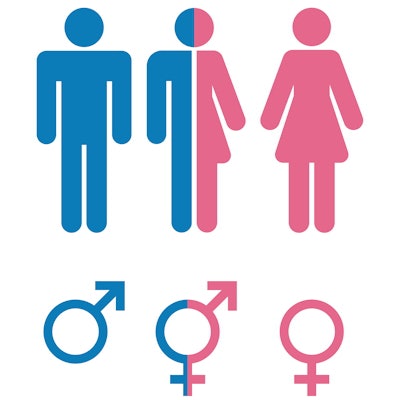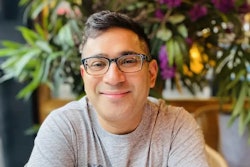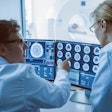
Data on breast cancer risk for the transgender community may be limited in the U.S. But radiologists can do their part in creating a welcoming environment to encourage transgender people to attend screening exams, according to a presentation on 21 July hosted by the Society of Breast Imaging (SBI).
Panelists from various medical facilities reviewed proactive steps radiologists can take to create inclusive spaces. These include the following:
- Using pronouns in identifying healthcare providers
- Using welcoming, nongendered language in materials such as brochures and websites
- Stop using assumptions when addressing patients
- Using open, inclusive language in questionnaires
"Marginalized communities are scanning all the time. We're scanning the physical and virtual environments for any indicators that would tell us these spaces are safe because many of these spaces historically have been exclusive and unsafe," said Julia Applegate, director of Equitas Health in Ohio.
Knowing the differences between sex and gender is also important in creating inclusive spaces and evaluating breast cancer in individuals who, for example, are assigned male at birth who identify as female and have taken gender-affirming hormones for eight years.
By making natal sex and gender identity available on forms and lists, researchers say patients can be distinguished and receive the care they need.
"As medical providers, we need to think about screening and anatomy," said Dr. Julie Thompson, medical director of trans health at Fenway Health. "We need to ask those questions for our patients and be transparent about why we're asking, such as whether or not patients have had body modification surgeries or gender-affirming surgeries."
For the transgender community, some screening recommendations are extrapolated from cisgender studies, but data from European studies have been helpful for experts in the U.S.
Thompson cited a 2019 Dutch study where 3,489 transgender patients (2,260 trans women and 1,229 trans men) were looked at. Over 95% of transgender people in the Netherlands received care at the center which the study was performed.
For trans women in the study, a total of 18 breast cancers were reported. Researchers said this was "46-fold higher" than in cisgender men, but lower than in cisgender women. For the trans male cohort, a total of four breast cancers were reported.
Dr. Tejas Mehta, chair of the SBI's diversity and inclusion committee, said if researchers want to have knowledge about outcomes for certain treatments and health issues in transgender individuals, they first have to know and be able to identify the population they wish to study from medical records.
"A major barrier is that SOGI (sexual orientation and gender identity) questions are not being routinely asked or collected in our electronic medical records," she told AuntMinnieEurope.com. "This is slowly changing as health care providers and organizations understand the importance of this information."
Mehta also said researchers need to be able to share this data with each other.
"There is power in larger numbers. This also allows for a more diverse population being studied, which means that the discoveries of the studies are more generalizable," she said.
The SBI and the American College of Radiology released screening guidelines in June addressing heightened risk for LGBTQ persons and Black women, as well as other overlooked and underserved populations. Biological males transitioning to female are at increased risk for breast cancer compared to other males due to hormone use. Biological females who transition to male and who do not undergo mastectomy remain at their previous risk for breast cancer.
"These individuals tend to be less likely to seek regular checkups and therefore, screening guidance for these patients is especially important," said Dr. Emily Conant from the University of Pennsylvania in a press release for the recommendations.
Mehta also said creating a system and environment where patients can be truthful about their responses to questions on self-identification is important.
"This too is slowing improvement in our healthcare system," she told AuntMinnieEurope.com.



















